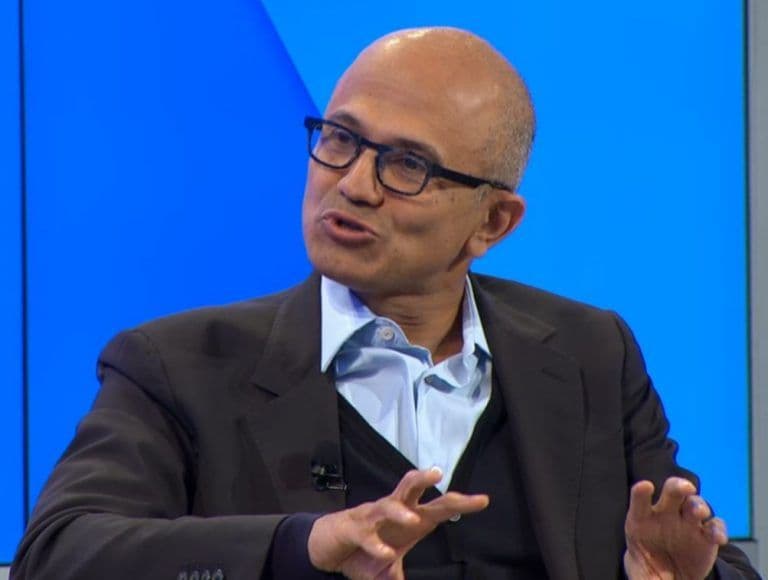Davos 2017: Fear of a Bot Planet
Published on January 23, 2017/Last edited on January 23, 2017/5 min read


Todd Grennan
Content Production Principal, Content Marketing at BrazeIt happens every winter. At the annual meeting of the World Economic Forum (WEF), held in Davos, Switzerland, CEOs, celebrities, and world leaders gather to discuss and debate the major issues of the day. And over the last few years, one of the biggest topics of discussion at Davos has been the so-called Fourth Industrial Revolution, which is expected to reshape the world economy and day-to-day life on the backs of mobile devices, the Internet of Things, increased automation, and other emerging technologies.
But while last year’s event was heavily focused on the ways that this new technological age would improve all our lives and bring billions into the Internet age, the 2017 meeting, held January 17–20, was dominated by a mood of concern—driven, some argued, by a populist, anti-globalization movement symbolized by Brexit and the rise of Donald Trump. And while the rise of automation and other linked technologies was still very much on the meeting’s agenda, fear of the potential risks and backlash associated with that rise was arguably the biggest focus of the event.
The promise of automation
Finding ways to automate tasks currently performed by workers—or to use technology to make those workers even more efficient—has long been a significant driver of economic growth, with everything from automated telephone switchboards to jetliners’ autopilot features helping to lead the way to today’s modern, thriving world. And as technology has become increasingly central to daily life and the world economy, the potential benefits of increased automation have only grown.
For brands looking to cut costs, stay ahead of the curve, and work more efficiently, the arrival of advanced computer-driven automation technologies can seem like a godsend. According to a survey of 1,600 high-ranking executives at international firms and organizations conducted by consulting firm Infosys, 64% of companies that have or plan to adopt artificial intelligence (AI)–powered automation feel that the future growth of their organization is dependent on those technologies.
A study by McKinsey & Company has found that 49% of the time that workers currently spend on their jobs could be replaced using automation technologies that already exist, generating significant time and cost savings for firms around the world—and potentially leading to cheaper prices for consumers. And during Davos, Accenture CEO Richard Lumb announced that his firm had recently helped a banked client save $100 million by taking advantage of automation in its compliance division, highlighting the extent to which automation-driven efficiency gains and cost controls are already here.
The risks of automation
In a report published by the WEF titled “The Future of Jobs,” the forum predicted that advances in technologies—including increased automation and robotics, along with the rise of nanotechnology and genetics-related tech—will lead to the creation of more than 2 million jobs across 15 major economies over the next five years. However, the report also predicted that efficiency savings and other tech-related changes would result in the loss of more than 7 million other jobs, particularly in the healthcare, energy, and financial services sectors, leading a net decline of 5 million jobs.

Microsoft CEO Satya Nadella at Davos (Source: IT World Canada)
In response to concerns that increased automation will lead to massive job losses and worsen inequality, Microsoft CEO Satya Nadella called on technology firms to avoid using automation to replace workers as AI is built into the next generation of technology solutions. “The fundamental need of every person is to be able to use their time more effectively, not to say, ‘Let us replace you [with technology,]’” Nadella said. “It’s augmentation versus replacement.” His remarks were echoed by IBM CEO Ginni Rometty, who said that she saw her firm’s role as helping to develop trust in AI by supporting an ethical framework for its use based on augmentation and transparency.
There are some signs that companies are taking these concern seriously. Among the executives surveyed by Infosys, for instance, 80% said that their companies would adopt a pledge to retrain existing staff rendered redundant by automation, rather than letting them go. Similarly, Accenture announced during Davos that it had replaced 17,000 of its workers using automation over the last year and a half, but had decided to shift affected workers to other roles or retrain them, rather than letting them go. But while these developments are encouraging, expecting all firms to take automation savings and use them to invest in their employees and the long-term health of their company is probably foolish. How brands decide to leverage these new technologies and the impact of those decisions on employment and inequality are still very much up in the air.
What this means for marketers
When we think about automation, it’s easy for marketers to focus on the benefits. Together with the rise of mobile and related emerging technologies, marketing automation has made it possible for startups to compete effectively with multinational brands, and for companies of all sizes to create valuable, relevant, and personalized one-on-one experiences with their customers on a global scale.
That’s transformative, and the positive impact of automation on marketing outcomes is likely to grow. But as your brand takes advantage of intelligent marketing tools like message personalization, dynamic content, send-time optimization, or Appboy’s Intelligent Selection, it’s important to remember that your customers are going to have their own opinions and experiences regarding automation. While marketing automation has generally followed the model that Nadella and Rometty are pushing for (namely, augmenting the efficiency and impact of each marketer), other industries may not be as lucky, and highlighting your use of automation may actually turn off customers who have been negatively affected by the implementation of these technologies.
That doesn’t mean you shouldn’t use these technologies—you should. But be thoughtful. Your customers will appreciate it.
Be Absolutely Engaging.™
Sign up for regular updates from Braze.
Related Content
View the Blog
How behavioral marketing turns data into personalized experiences

Team Braze

Enterprise generative AI: Transforming data, decisions, and customer experiences

Team Braze

Omnichannel personalization: Delivering consistent, connected customer experiences
